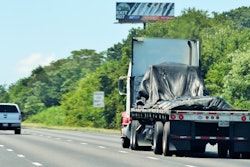Trucking news and briefs for Monday, September 28, 2020:
Proposal aims to clarify federal ‘independent contractor’ test
The Department of Labor’s Wage and Hour Division is proposing to better define independent contractor in the context of the Fair Labor Standards Act. That law has long governed employer wage and hour rules, such as minimum wage and overtime, and has defined employer/employee relationships for the purposes of applying those rules.
A new notice of proposed rulemaking would add a part to Title 29 of the Code of Federal Regulations. It would adopt interpretations to which courts and the DOL have long adhered when it comes to determining independent contractor status. It also would sharpen a multifactor economic-realities test into “five distinct factors,” and would shift greater weight in the determination to “actual practices” in independent contractor agreements as opposed to “what may be contractually or theoretically possible”.
For the purposes of litigating issues under the FLSA, there’s never been a clear definition of independent contractor, DOL said in its notice. That’s left it up to DOL and the courts in wage and hour-related cases to interpret the degrees to which any employer “suffers or permits” work by an employee/contractor.
DOL and federal courts have long analyzed the employer/employee relationship by looking to the degree of the worker’s “economic dependence” on the employer. The current multifactor test is designed to get to the root of whether a worker is “an independent contractor under the FLSA.” Yet DOL has concluded “the test’s underpinning and the process for its application lack focus and have not always been sufficiently explained by courts” or the DOL itself. That’s resulted in uncertainty for employers, employees and independent contractors.
The NPRM proposes a variation on the current approach. The proposal is aimed at decreasing litigation and encouraging innovation among employers, employees and contractors. The five economic-reality factors it envisions, consolidating some of the current ones and changing the weight of others, are:
The proposal would place the greatest emphasis on factors 1 and 2, with the other factors carrying less weight. “As a result of their greater weight, if both core factors point towards the same classification, their combined weight is substantially likely to outweigh the combined weight of other factors that may point towards the opposite classification,” DOL said.









